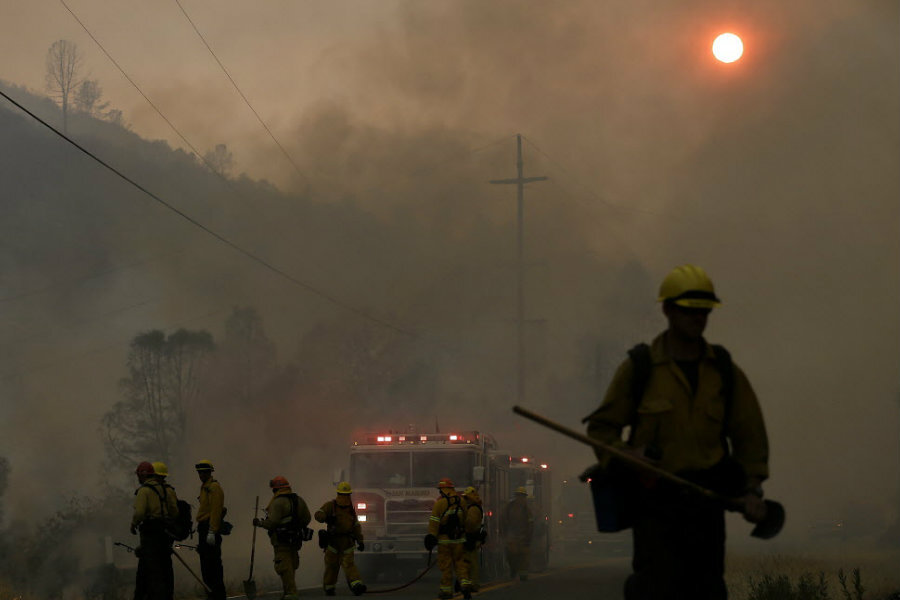Personal drones disrupt emergency responders amid wildfires
Loading...
| SAN DIEGO
As Jason Thrasher lowered his helicopter to a park with seven firefighters aboard, he saw what he thought was another firefighting chopper battling a blaze that was threatening homes.
The California Department of Forestry and Fire Protection pilot suddenly identified the object as a four-rotor drone only 10 feet (3 meters) from his windshield, forcing him to make a hard left to avoid a collision about 500 feet above ground, according to a report he filed the next day.
"If that drone came through my windshield, I have no idea what could have happened," Thrasher said in a phone interview. "If that drone hits my tail rotor, for sure it's going to be catastrophic."
The near-miss last September in Nevada City, about 60 miles northeast of Sacramento, explains why drones have quickly become a serious nuisance and concern for firefighting pilots and other first responders, fueling calls for more oversight and self-policing in the skies.
The U.S. Forest Service has tallied 13 wildfires in which suspected drones interfered with firefighting aircraft this year — 11 since late June — up from four fires last year and only scattered incidents before. Last month, the sighting of five drones in a wildfire that closed Interstate 15 in Southern California and destroyed numerous vehicles grounded crews for 20 minutes as flames spread.
Under FAA guidelines, drone hobbyists should fly no higher than 400 feet (120 meters), stay clear of stadiums and people, and avoid flying within five miles of airports. During wildfires and other emergencies, the FAA imposes temporary restrictions.
Firefighting agencies have introduced public service announcements to warn drone hobbyists, while lawmakers are seeking stiffer penalties for interfering.
"When you can't support firefighters on the ground, fires get bigger," said Ken Pimlott, director of the California Department of Forestry and Fire Protection. "It's significant, and it's a huge issue."
On Aug. 2, for the second time in three days, a commercial pilot reported a drone while approaching John F. Kennedy International Airport in New York. On Sunday, four commercial flights up to 3,000 feet (915 meters) in the air spotted a drone while prepping for landing at Newark Liberty International Airport.
Last Tuesday, as flames engulfed a Vietnamese restaurant in San Diego, the local fire department pleaded with drone operators to leave the area, tweeting, "You are interfering with fire operations."
A simple explanation for the growing number of encounters is that consumer drones are more common as prices fall. The Consumer Electronics Association predicts U.S. sales will reach 700,000 this year, up from 430,000 last year and 128,000 in 2013. The industry group estimates this year's average sale price at $149, down from $160 last year and $349 in 2013.
Twenty members of Congress from California asked the Federal Aviation Administration last month to consider a requirement for drone makers to include technology that aims to prevent operators from interfering with first responders. One bill in the California Legislature would raise fines and introduce jail time for anyone who impedes firefighters, and another would grant immunity to first responders who destroy interfering drones.
Greg McNeal, a Pepperdine University law professor, likens worries about safety and ethical boundaries to concerns years ago about use of camera-enabled cellphones in locker rooms and other public places. Governments are wrestling with how to regulate a new consumer technology that can wreak havoc when misused.
Most operators who flew near wildfires were probably unaware of the dangers, said McNeal. Others are "straight reckless," he said, perhaps motivated to get images that no one else has to sell them.





